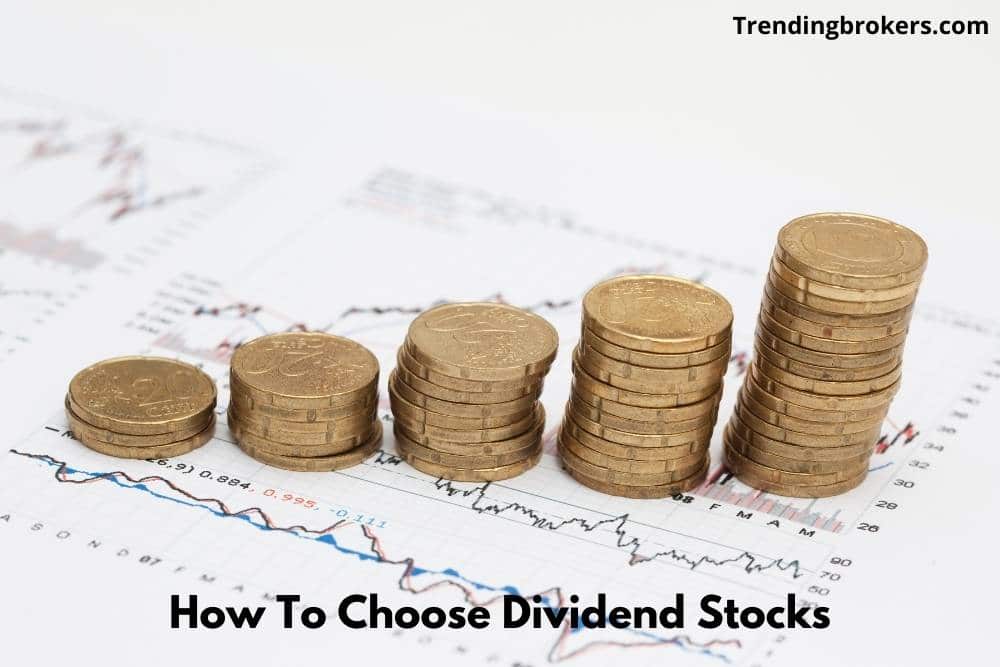How to choose dividend stocks? It totally depends upon your investment plan. If you are looking for a long term investment that provides a stable return annually. The dividend stocks are the best choice for you. If you do not hear about them, check what dividend stocks are and how to invest in them. Here we also talk about their benefits and investment security. To collect information about the best dividend stocks, read the given below article carefully till the end.
What are dividends and dividend Stocks?
Dividends are payments which a company makes for sharing profits with its stockholders. They are paid on a regular basis in the interval of six months or year. Dividends are also a way of earning profits from the invested stocks. Now you are thinking about why people face losses if they receive dividends of their stocks. The answer is very simple. Not all companies pay dividends on their stocks. So if you are buying stocks for dividends, you need to pick specific stocks which pay dividends to their investors. These types of stocks are known as dividend stocks.
How do stock dividends work?
A dividend should be paid per share of stocks. Suppose A company pays $ 2 yearly cash dividends for its signal share. And you own 30 shares of a company. In this case, The company will pay you $ 60 annually.
Kinds of Dividends
Generally, dividends should be paid out on a firm’s common stocks. There are various kinds of dividends criteria that a company selects to pay its shareholders.
Cash Dividends
These are the most common types of dividends. Companies usually pay these dividends in cash, which directly transfers into the shareholder’s trading account instead of profits in new operations. Therefore, the result of this is the company’s share price decreases nearly equal amount as the dividend stocks.
For instance, if the firm issues a dividend of 5% of the share price, shareholders will see a drop of 5% in the value of their shares. This happens due to economic value transfer.
Stock Dividends
A stock dividend is a form of a dividend in which the company will offer additional shares of a company to the shareholders instead of paying cash. The company will decide to distribute their new shares to the shareholders of record. This type of dividend payment takes place when the company’s availability of liquid cash is in short supply.
For example: Suppose the company will issue a 5% stock dividend. Due to this, the number of shares increases by 5%, which is 1 share for the owner of 20 shares. If there are 1 million shares available in a company, this will be converted into an additional 50,000 shares. So if you have 100 shares of that company, you will get 5 new shares.
Dividend reinvestment programs (DRIPs)
DRIPs is a type of dividend plan that companies offer to their shareholders. In which dividends received by the shareholders will automatically reinvest into the new shares of the firm on the dividend payment day.DRIPs plans are generally commission free and provide discounts on the timeshare prices.
For example: Suppose you receive a cash dividend of $10,000 on 1000 shares when the company pays $10 per share. And you are fully involved in the DRIP plan of the company, 100% of the Cash dividends which you receive will get reinvested on the payment date. If the market share price is $100, you can purchase new shares at the cost of $85 with the 15% discount available on the DRIP.
Special Dividends
These dividends should be paid on all shares of a firm’s common stocks. But do not repeatedly pay like other regular dividends. A company always releases a special dividend to distribute profit which was gathered from several years and for which it has no instant requirements.
Preferred Dividends
Dividends of these types should be paid to the owners of the preferred shares. Preferred stocks are the type of stocks that are treated more like bonds compared to shares. They are generally paid quarterly, which is totally different from the dividend time period of common stock. Dividends of preferred stocks are typically fixed.
Key Factors for picking Dividend stocks
Before purchasing dividend stock, you need to know how to select them. These factors will help you to summarise how much dividend you can expect from the specific stock and how good the dividend should be, and the most important thing is how to avoid red flag stocks.
Dividend yield: This is the yearly dividend mentioned as a percentage of the stock price. As we told you before, suppose a company pays $ 1 as an annualized dividend and the stock’s price is $ 20 per share, then the dividend yield will be 5%. Yield is an essential factor that is used for comparing a stock’s currency yield up to historical levels. It helps us to find red flags. The higher dividend, the more stock is suitable for buying. But must check if the company have the ability to maintain the dividend payout.
Payout ratio: This is the dividend percentage of a company’s earnings. Suppose a company is making a profit of $ 2 per share in net income and paying a $ 1 per share dividend. In this case, the payout ratio is 50%. Note that the fewer the payout ratio, the more reliable a dividend will be.
Cash Dividend payout ratio: This is a dividend percentage of a company’s operating cash flow shortcoming capital expenditures. This factor is essential because GAAP net income is not a cash determinant, and many non-cash expenses have adverse effects on company earnings. The company’s actual cash flow varies remarkably from one time period to the next. This variability has a harmful impact on a company’s payout ratio, confusing as per timings. Traders should use the cash dividend payout ratio and the simple payout ratio for understanding a dividend’s sustainable growth.
Total return: The rise in the stock price is known as the capital gain. It may also increase in dividends paid. For instance, you pay $ 10 for that stock whose value rises by $1 and pay $0.05 as a dividend. In this case, a dividend that you gain, such as $ 1.50 will receive equivalent to a 15% total return.
EPS: This is the earnings per share. The EPS factor is similar to a company earning as per the single share value. The companies which are showing considerable growth in their earnings per share as per timings and increment in their dividend are offering the best dividend stocks to their clients. So, one must check the earnings history growth of the company before buying its dividend growth shares.
P/E ratio: it is the price to earnings ratio. This ratio should be determined by dividing a company’s share price by the company’s earnings per share. The P/E ratio is a factor that should be used with dividend yield to find either dividend stocks are appropriately valued or not.
How do dividend stocks work?
To understand how dividend stocks work correctly. We will explain the process through an example. Suppose you purchase 100 shares of a firm on $ 10 each, and the annual dividend of each share is $0.30. You have invested $ 1000. After completion of a year, you get
$ 30 as a dividend payment. This works out at a 3% yield which is not too bad. It totally depends upon you what you like to do with your dividend. There are four primary options available for you.
- Save the cash in your bank accounts for yearly interest.
- Buy stock and other financial instruments in different fields.
- Reinvest them to buy more shares of the same company.
- Spend the money on whatever you want to do like shopping, celebrations, etc.
Without any difficulties, whether the company stock increases or goes down, you continue to get those dividend stocks payments until the company stops distributing them. The benefit of stocks that consist of dividends is that portion of your return is adding quarterly payments. Must note that not all companies paying dividends on their stocks will continue paying dividends in every economic condition like the COVID-19 pandemic is the best example of this condition. But a well-diversified portfolio of dividends stocks will generate your reliable payments as shine and shadows.
How do dividend stocks get taxed?
Most dividend stocks pay “qualified dividends”, which totally depends upon your tax criteria, and will get taxed at a rate of 0 to 20 per cent. That is remarkably fewer than the general income tax rate of 10% to 37 per cent or others.
When various dividends pass the criteria of low tax rates, these dividends are known as nonqualified dividends or ordinary and get taxed at the marginal tax rate. However, multiple stocks are designed to pay high dividends yields, and they come with higher tax obligations due to their corporate design. The two common examples are real estate investment trusts (REITs) and Master limited partnerships, or MLPs.
Do not worry about these extra taxes that should not be included in your dividends stocks if your dividend stocks are in a tax-advantaged retirement plan like IRA (individual retirement account).
Dividend investment strategies
Are you a long term investor and seeking more investment plans for enhancing your portfolio? Then, a dividend investing plan known as DRIP is the best option for you. In this dividend investment strategy, you may not require any extra funds, and It reinvests your returns which you receive as a dividend stock payment from the company, back into that company’s shares. This is one of the most accessible tools. You only need to set it, which generates profits through the power of time and investment returns in your profit-generating favour.
Suppose you are creating a portfolio for making profits. In that case, it’s necessary to know that stock dividends are not obligatory for a firm in a similar way that firms should create interest payments on bonds. If your company starts deducting expenses, your dividends will be at high risk. Because of this, you must make your portfolio with safety measures and create a diversified portfolio across different companies with different risk factors. Dividend focused ETFs (Exchange Traded Funds) are the efficient way to mitigate risk in your portfolio. These investment options enable you to own diversified portfolios of dividend stocks. In addition, some brokers offer high yield dividend stocks of high yield companies: ROinvesting and TradeATF.
We all know we cannot fully estimate the risk of a dividend cut, but you can reduce the risk to make sure that you generate sufficient income to fulfil your needs. If you are looking for stable income, then target high-quality companies stocks that have records of dividend stock growth.
Best Dividend stocks for long term investment
National Presto Industries Inc.
National Presto Industries Dividend 2021 offers an average yield of 1.96%, along with 100% payout stability. NPK maintains 20% payout growth stability. It pays an average dividend per year of $ 1.80, along with an average dividend yield of 1.96%. Its minimum dividend payment limit is $1.00, and its maximum dividend payment limit is $ 5.00, which they paid in 2020.
ONEOK Industries
ONEOK industries dividend 2021 provides an average yield of 7.02% and a payoff matrics ratio of 123.4%. The ONEOK industry maintains a cash dividend payout ratio at 131.6%, which is a symbol of positive growth. The minimum dividend payout range was 4.17% on December 27, 2016, and the maximum dividend payout range was 23.45% on March 18, 2020. Currently, its average dividend payout range is stable at 6.46%.
Chevron Corporation
Chevron Corporation (CVX) 2021 dividend yield is 5.55% and consists payout matrics ratio of 275.9%. Its dividend yield relative matrics show dividend growth of 0.97 %, and its cash dividend payout ratio is 102.2%. Chevron corp maintained its minimum dividend yield range at 3.23% on January 12, 2018, and the maximum dividend yield range at 8.96% on March 23, 2020. Its average dividend yield range is 4.40%. By reference to all these ratios, we can estimate a good growth in dividend payout.
Conclusion:
Dividends are the payments that companies make to their shareholders as a distribution of profits. Check benefits of investing in dividend stocks. Collect complete details about how dividend stocks work and which measures you need to take while selecting dividend stocks. Check the best dividend stocks with a high yield range.


